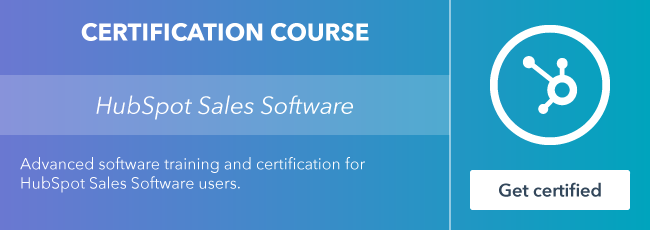In HubSpot CRM, every contact record has properties that hold bits of information about the person it represents. There's a long list of properties that come standard, but I wanted to call out a few that are especially cool because they automatically update. So, the information in them is always current.

Fun fact: These are all contact properties, but many of them also exist on company records. So if you spend a lot of time filtering company records, some of these will help with that, too.
Owner Assigned Date
When you get a new lead assigned to you, it’s important to start working that lead as quickly as possible. Owner assigned date tells you when a contact was assigned to its current owner — in the case of your leads, that’ll be you. You can add a filter for this property to a list of your contacts to make sure you aren’t overlooking anyone. Set the filter to “today” or “this week” and save it so you can monitor the new leads that are being sent your way.
Number of Page Views
If you’re making an initial assessment of a contact, Number of page views can be a good indication of how engaged a person is with your brand. This property keeps a running tally of the number of times the person has viewed one of your webpages. The higher the number, the more engaged they are. If you have a long prospecting list you’re trying to prioritize, add a column for this property and sort the list from highest to lowest.
Last Contacted, Last Activity Date, and Last Modified Date
These three properties are great for making sure you don’t forget about anybody. Last contacted shows the last time a call, email, or meeting was logged on the person’s record. Last activity date is similar but also looks at notes and tasks, which are internal actions. Last modified date shows the last time any property on the contact record was modified. Depending on your sales process, you can use one or a combination of these properties to identify the contacts who are getting neglected.
Recent Sales Email Opened, Clicked, or Replied
You can use these three properties to home in on the contacts who are engaging with the one-to-one emails you’re sending them. Recent sales email opened gives the date that the person last opened an email from you. If you add a filter for this property and set it to “is known,” then you’ll only see contacts who have opened an email from you, which is a pretty good sign that they’re engaging with you. Recent sales email clicked gives the date that the person last clicked on link in one of your emails. If you frequently include links in your emails, this property will give you an even better indication of engagement. Recent sales email replied gives the date that the person last replied to an email from you. By combining this property with one of the previous two, you can get a list of people who have opened or clicked one of your emails but haven’t replied. If they opened or clicked your email more than a few days ago, today might be a good day to follow up with them.
Last Meeting Booked
If you’re using the Meetings tool, your prospects can book time directly on your calendar. To prep for these meetings, you’ll want to use the Last meeting booked property. This property shows the date of the contact’s most recently booked meeting. In some cases, this date will be in the future. For example, if I book time on your calendar for tomorrow, tomorrow’s date will show in the Last meeting booked property on my contact record.
There are a few ways to use this information. At the end of each day, you might filter your contacts to see anyone who’s booked a meeting for tomorrow. Take a quick look at each of their records to make sure you’re ready to meet with them. Leave yourself a note on their timeline with things you want to discuss during the meeting.
Additionally, if you have a list of contacts you’re trying to get meetings with, add a filter for this property and set it to “is unknown.” That way, when people book time from you, they’ll be removed from the list. Then you can work through the list until it’s empty.
Finally, for all the people who are already in your sales pipeline, you want to make sure you always have clear next steps. For some sales processes, that might mean always having a meeting on the books. You could add a filter for this property and set it to “is before today.” Then you’ll see all the people you don’t have a future meeting planned with.
Now in Sequence
The Now in Sequence property is a True/False property. If a person is currently enrolled in a Sequence, the property will be True. Otherwise, it’ll be False. This is a handy property to add to the lists you use when you enroll contacts in a Sequence. By adding this property to your filters, you can avoid accidentally trying to enroll contacts into a Sequence when they’re already in one.
Likelihood to Close and Contact Priority
These properties are only available to our Enterprise customers. If that’s you, you’ll definitely want to use these properties. They’re calculated using HubSpot’s proprietary algorithm and are built to help you prioritize your outreach. Likelihood to close gives you a percentage likelihood that someone will buy from you. Contact priority ranks each contact’s priority from “low” to “very high.” If you have a long prospecting list you’re trying to prioritize, you could filter the list to only see contacts with a Likelihood to close that’s above, say, 50%, and then you could add a column for Contact priority and sort your contacts from highest to lowest.
Recent Deal Close Date, Recent Deal Amount, and Total Revenue
According to the flywheel model, one of the most important things a salesperson can do is make sure that the people they sell to are happy with their purchase. Recent deal close date shows the most recent date that a deal this contact is associated with closed. In other words, it’s the last time they bought something from you. Recent deal amount shows the value of that closed deal. Total revenue calculates the total value of all of the won deals associated with the contact. Using these properties, you can find the people who spent the most money and check in with them a few weeks or months after the sale to make sure they got the value they expected. If they’re happy, it could be a good time to ask for referrals. If they’re unhappy, it’s time for you to use your consultative sales skills to figure out why and try to fix the problem. If they start telling their friends that you sold them something that didn’t work out for them, that’s going to make it harder for you to sell in the future. However, if you can come in and provide solutions to their problems, you might create a lifelong advocate that’ll help you attract a whole new batch of potential customers.
Check out these properties in your own HubSpot account:
That’s a Wrap!
Those are my favorite self-updating properties. Are there any you use regularly that I missed? Let us know on the HubSpot Community, where you can connect with others on HubSpot tips, tricks, and updates.










